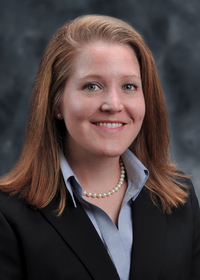Deer Processing to Minimize CWD Risks (without removing internal organs)
Chronic wasting disease (CWD) has the potential to negatively affect deer populations in Mississippi, which is the reason deer-management experts are currently seeking information regarding the location and prevalence of the disease. Also of interest is whether the meat of the affected deer is safe to consume. Currently, the Centers for Disease Control and Prevention (CDC) recommends testing deer harvested in CWD zones and, if CWD is detected, discarding the meat. If a deer is acting abnormal or showing signs or symptoms of CWD (see references below), take extra precautions in the harvesting process. Testing is the only way to know forcertain if the deer has CWD.
While it is highly recommended and encouraged, hunters may choose not to have their harvested deer tested but instead opt for techniques and practices that will minimize risk. Some processing methods are listed here that may reduce human risk by avoiding or minimizing contact with tissues that contain the greatest amount of the disease-causing agent (infectious prions).

- Avoid cutting or partially cutting any part of the head, neck, spinal cord, spleen, or intestines because CWD prions (proteins) are believed to be concentrated in these areas.
- If it is possible to move the harvested deer to a facility with hot and cold water for cleaning within 2 hours, field-dressing is not recommended. Additionally, in situations where a hunter must drag the carcass on the ground or through water, or where contamination can enter the cavity/cut surfaces, do not field-dress.
- If it will take more than 2 hours to get the deer to a facility for dressing, or if you are in a remote location and the temperature is above 45–50°F, then field-dress the animal if you can avoid dragging and/or contaminating the body cavity or any cut surfaces of the carcass.
- CAUTION: If you must field-dress, do not cut any part of the head, neck, or spinal cord. Do not remove the head or puncture the intestines, spleen, or stomach. This is very critical to having safe meat.
- Follow these steps for dressing a deer carcass:
- At the processing area/facility, hang the deer by the rear legs if possible; it is very helpful to use some type of gambrel stick to hold the rear legs apart. Use disposable gloves if at all possible.
- Begin to remove the hide from the rear legs, below the gambrel, and work downward toward the head using clean, sanitized knives and hands. Be careful not to puncture the meat or internal organs. Insert the knife just under the hide and cut outward for all cuts when separating the skin from the carcass. Keep outer skin/hair from touching the carcass.
- Continue to peel the hide downward, applying downward pressure, being careful to keep the outside of the skin and hair from touching the exposed carcass (meat).
- Peel the hide down over the neck and front legs, allowing the skin to cover the head and expose enough of the neck and forelegs to later remove the head.
Use caution to avoid contaminating hands or instruments with fluids from the deer’s head (mouth, eyes, lymph glands) as it is one of the concentration points for the infectious prions, if positive for CWD.
- Wash/clean the carcass thoroughly with warm water.
- Trim any residual hair, bruises, blood clots, or other defects from the carcass.
- Using clean and sanitized hands and a knife (different from the knife used to skin the carcass), begin to remove the meat from the bones (without puncturing the body cavity, intestines, or organs) starting from the rear legs.
- Remove the meat from the rear legs from around the bones, being careful not to cut the rectal gut between the rear legs. Place meat in a clean container and cover with ice, or move it into a cooler for quick chilling (40°F or below).
- Continue by removing the “back strap” or loin eye (longissimus dorsi muscle) from both sides of the backbone, beginning at the hip and following either side of the vertebral column from the hind legs to the shoulders. Use a sharp boning knife to get the loin eye started to pull away from the bone, and continue pulling the loin eye downward using the knife to help cut meat away from the bone and rib cage all the way down through the shoulder.
- Place meat in a clean container and cover with ice, or move it into a cooler for quick chilling (40°F or below) as soon as possible.
- Remove remaining external meat from the outer portions of the shoulders, using caution to avoid cutting into the spinal column, and refrigerate immediately. Remember to keep meat: clean, cold, covered.
Note: It is strongly recommended to remove lymph glands from the hind- and forequarter cuts during boning.
- If the inside “tenderloins” are desired, make a small cut (enough to get a hand inside the body cavity) into the upper rear flank area (belly side) on either side of the midline, being very careful not to puncture the intestines. Using your hand, peel the inside tenderloin away from the backbone on both sides, and work it loose until it can be pulled away/cut from the spinal column and the hindquarters. It is helpful to use a small knife with the blade held between the index finger and thumb with very little of the blade protruding. Be very careful to not puncture the rectal gut or spinal column as they are very close to the tenderloins.
- After you have removed the meat from the carcass and properly stored it, use a separate knife or saw that has not been previously used to remove heads and that will not be used to cut any meat to remove the head. Cut perpendicular to the vertebral column behind the head in the neck area to remove the head with 6 inches of neck.
After removing the head:
- Wash the saw and/or knife used to remove the head with warm water.
- Wash utensils in hot, soapy water.
- Sanitize the utensils using a 50:50 water and bleach solution for instruments used to remove the head as recommended by the Mississippi Department of Wildlife, Fisheries, and Parks (MDWFP).
- Use separate cleaning solutions and sanitizers to clean utensils and other equipment used in dressing the carcass and cutting the meat.
- A chlorine solution with 200 ppm active chlorine is recommended for all other meat-contact surfaces and utensils (1 tablespoon or ½ ounce household bleach per gallon of tap water).
- This type solution is good for sanitizing all food-processing equipment after it has been thoroughly cleaned with warm, soapy water and rinsed with hot water.
- Wrap the entire head in a thick, plastic bag, seal or tie the ends well, and freeze the head until it can be taken to one of the collection points for testing. Visit the Mississippi Department of Wildlife, Fisheries, and Parks at https://www.mdwfp.com/wildlife-hunting/chronic-wasting-disease/sample-collection/ for specific collection locations within CWD management zones and other statewide collection points. Testing is free.
- It is recommended to hold the meat up to 7–10 days if you have followed the steps above and it is stored at 40°F or below. If it is not possible to keep the meat refrigerated as described, or it will be longer than 7–10 days before you receive the CWD test results, then freeze the meat and keep it frozen until you receive the CWD results.
- Good sanitary practices are strongly recommended throughout the process. Keeping hands and equipment clean between each carcass is critical to avoid potential cross-contamination from carcass to carcass. It is highly recommended and encouraged to use disposable gloves to handle the carcass. Change gloves between skinning and cutting the meat, as well as anytime the gloves become contaminated or dirty.
- Removing the ribs is not recommended because of the small amount of meat and the increased chance of carcass contamination from intestine/stomach puncture, as well as the added potential for exposure to CWD prions. Remember, the infectious prions are currently believed to be primarily concentrated in the head, central nervous system, certain lymph glands, and spleen.
If you have any doubts or suspicions about the health of the animal, it is NOT recommended to process the carcass, but you should still have the head tested. All hunters/processors are strongly encouraged to have the heads of all deer tested and to hold the meat until test results are received. If negative, proceed with processing the deer to specifications and desires. If positive, it is not recommended to consume any part of the carcass.
For additional information and testing details, see the following references:
Testing
Mississippi Department of Wildlife, Fisheries, and Parks
Chronic Wasting Disease Dashboard
Chronic Wasting Disease Sample Collection
General
Mississippi State University Extension Service
Publication P3049 Food Safety and Risk Reduction for Deer Processors
Extension Outdoors: CWD Management Calls for ‘All Hands on Deck’
Publication 3199 What You Need to Know about Chronic Wasting Disease in Mississippi Deer
Publication 3305 (POD-01-23)
By J. Byron Williams, PhD, Associate Extension Professor, Central Mississippi Research and Extension Center; Courtney A. Crist, PhD, Assistant Extension Professor, Food Science, Nutrition, and Health Promotion; and Bronson K. Strickland, PhD, Extension Professor, Wildlife, Fisheries, and Aquaculture.
The Mississippi State University Extension Service is working to ensure all web content is accessible to all users. If you need assistance accessing any of our content, please email the webteam or call 662-325-2262.



